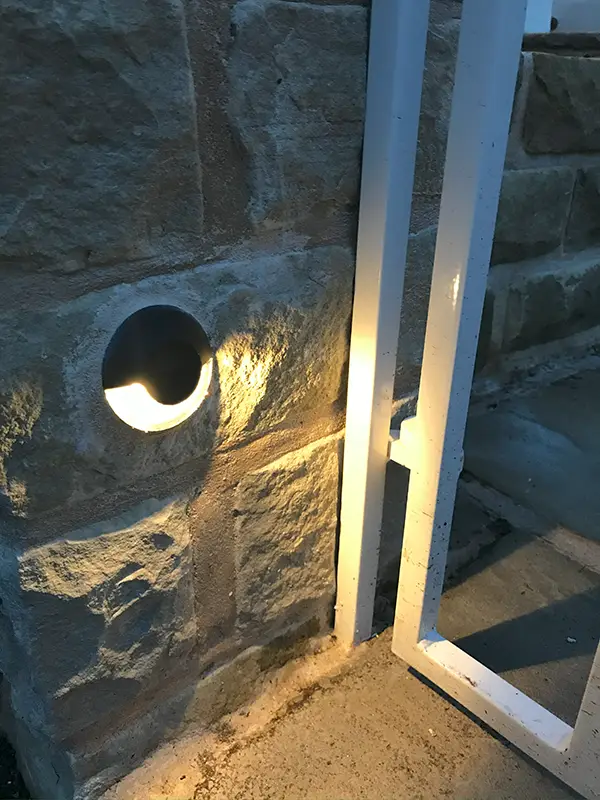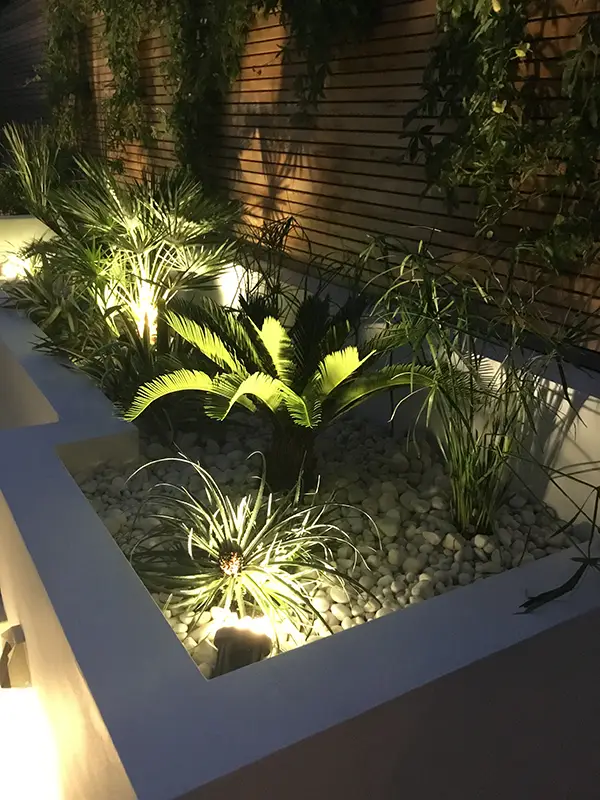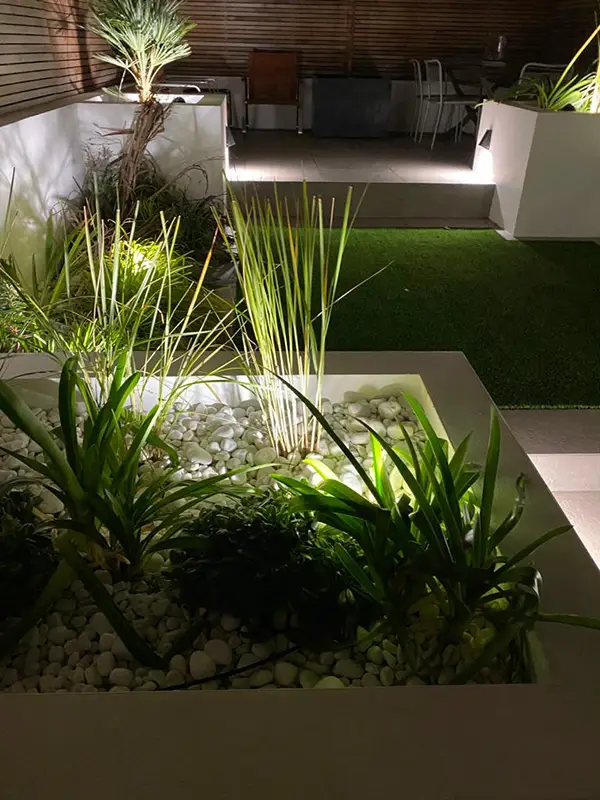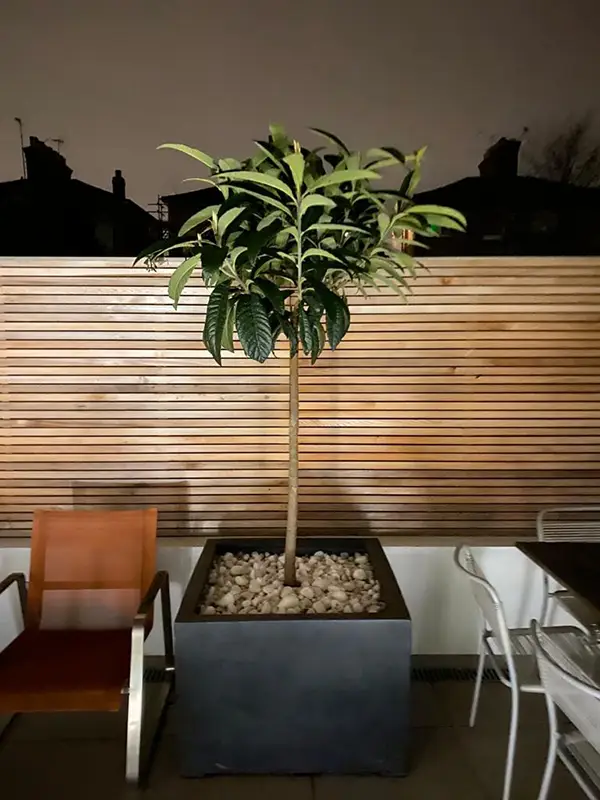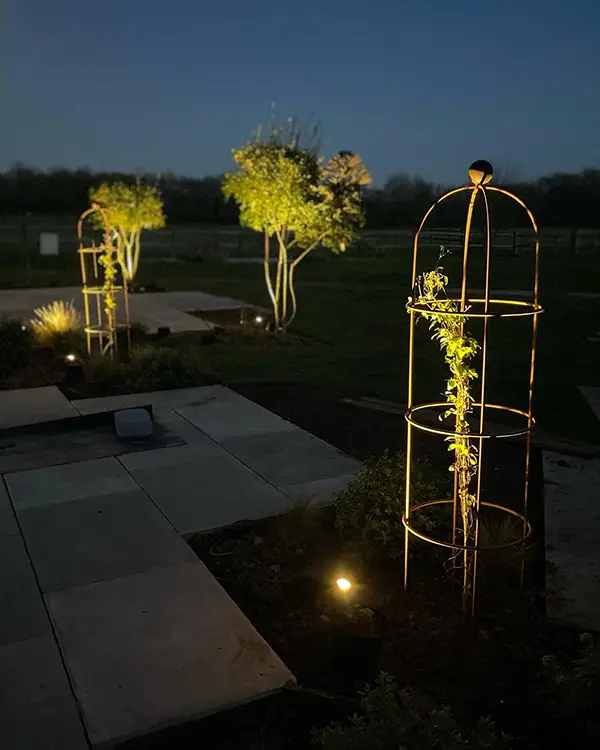Where the budget and site allow, we offer garden lighting advice, some of which will be practical and some aesthetic, for example we recommend quality fittings that should withstand weather.
It is important to offer safety from car to front door, from house to bins, home office to kitchen, and up and down steps which is a key feature of a successful garden lighting scheme. In addition, lighting the garden particularly where there are large kitchen doors can offer a pleasing view, not least in the dark winter months.
We try to offer subtle lighting that takes account of the wildlife in the garden and aims not to interfere with the nocturnal creatures’ habitat.
Features of our garden lighting schemes
Safety and navigation
- Illuminate pathways, steps, and changes in level to prevent accidents.
- Highlight potential hazards like ponds or uneven terrain.
- Ensure safe passage around the garden after dark.
Aesthetics and ambiance
- Creating a desired mood or atmosphere, whether it’s romantic, dramatic, or relaxing.
- Highlighting focal points like sculptures, water features, or specimen plants.
- Using light and shadow to create depth and texture.
- Extending the enjoyment of the garden into the evening.
Functionality
- Illuminating outdoor dining or entertaining areas.
- Providing task lighting for cooking or other activities.
- Enhancing the usability of the garden at night.
Plant and architectural enhancement
- Uplighting trees and shrubs to showcase their form and texture.
- Highlighting architectural features of the house or garden structures.
- Creating silhouettes and shadows for dramatic effect.
Energy efficiency and sustainability
- Using LED lighting for its low energy consumption and long lifespan.
- Incorporating solar-powered lighting where appropriate.
- Minimising light pollution by directing light downwards and avoiding excessive brightness.
Integration with the overall design
- Ensuring that the lighting complements the garden’s style and layout.
- Concealing lighting fixtures to maintain a natural appearance.
- Creating a balanced and harmonious lighting scheme.
Specific lighting techniques
- Uplighting: Illuminating trees, shrubs, or architectural features from below.
- Downlighting: Directing light downwards from trees, pergolas, or walls.
- Path Lighting: Providing safe and effective illumination for walkways.
- Spotlighting: Highlighting specific features with focused beams of light.
- Washing: Evenly illuminating a wall or surface.
- Backlighting: Creating silhouettes by placing light behind an object.
- Moonlighting: Simulating natural moonlight with soft, diffused light from above.
- String lighting: Creating a festive or cozy atmosphere.
- Water feature lighting: Illuminating ponds, fountains, and other water elements.


